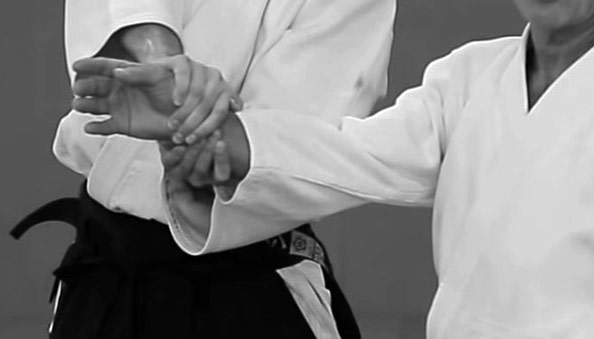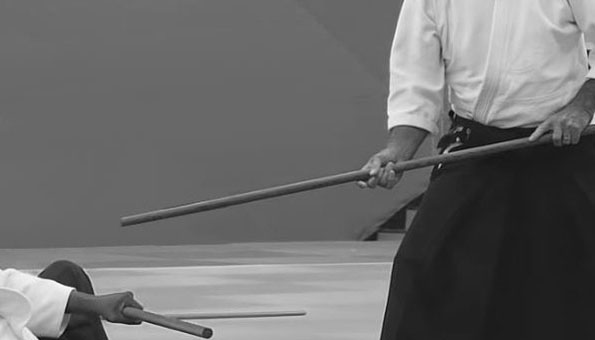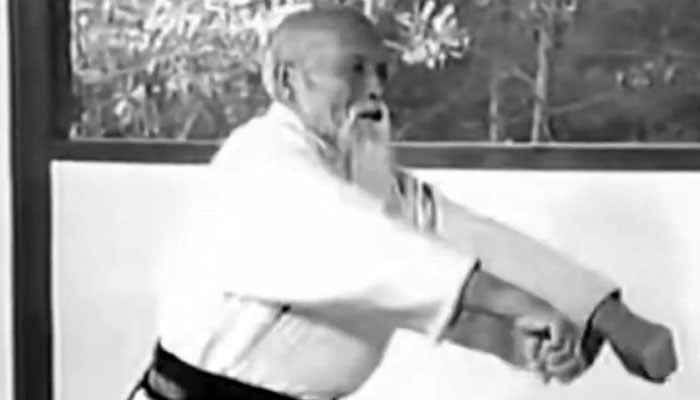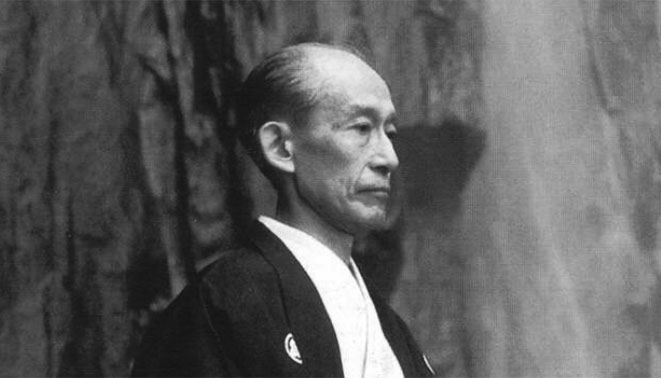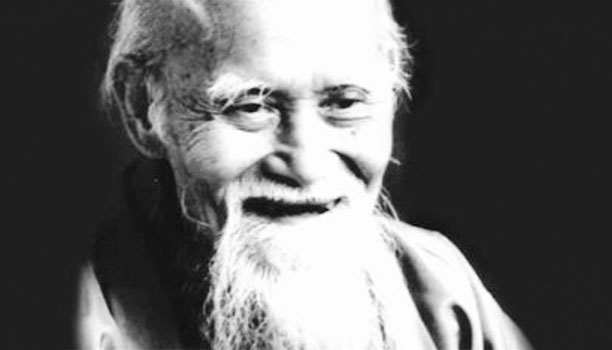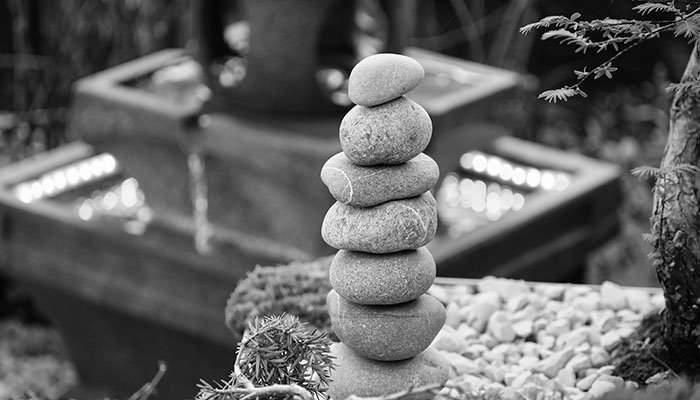-
Kuzushi – The Subtlety of Unbalancing Your Opponent in Aikido
Kuzushi 崩し is a term widely used in Japanese martial arts, referring to the act of breaking an opponent’s balance. The word “kuzu” 崩 literally means “crumble” or “collapse,” and “kuzushi” generally signifies the concept of unbalancing an opponent. While most commonly associated with Judo, the term is also employed in Aikido and some other martial arts, though its interpretation can vary slightly across different disciplines. Judo competitors are constantly seeking opportunities to break their opponent’s balance In Aikido, kuzushi occurs at the moment of initial contact. On a physical level, it is achieved through a combination of timing, positioning, and posturing. By employing precise timing, the nage 投げ (defender)…
-
Ueshiba’s Jo in Aikido: Unification of Martial and Spiritual Principles
The history of the jo 杖 in Aikido can be traced back to the founder of Aikido, Morihei Ueshiba, who was known for his extensive martial arts training, including the art of the jo. The origins of the jo in Japanese martial arts can be traced back even further, to the 17th century, when Muso Gonnosuke 夢想權之助, a samurai who was defeated in a duel with the legendary swordsman Miyamoto Musashi 宮本武蔵, developed a new form of martial art that focused on the use of a short staff, which he called Shindo Muso Ryu Jojutsu 神道夢想流杖術. Shindo Muso Ryu Jojutsu 神道夢想流杖術 Over time, jojutsu was also incorporated into other martial…
-
Exploring the Significance of Torifune and Furitama in Aikido and Shinto Practice
Torifune and Furitama are commonly practiced preparatory exercises in Aikido. Torifune 鳥船, which is typically translated as “bird rowing” or literally as “bird boat,” is also known as funakogi undo 船漕ぎ運動 or “boat rowing exercise.” The earliest mention of Torifune was in Kojiki 古事記, an ancient Japanese chronicle of myths, where it was referred to as Ame no Torifune 天の鳥船 (Heavenly Bird Boat). It was the name given to one of the deities born from Izanagi 伊邪那岐 and Izanami 伊邪那美, two of the most important kami (deities) in Japanese mythology. They are sister and brother, and also husband and wife, and they are the creators of the Japanese archipelago and…
-
Zanshin and Mushin – The Two Martial ‘Hearts’ of Aikido
Zanshin 残心 is a crucial concept in Japanese martial arts. Literally, Zan 残 means “remaining” or “lingering,” and Shin 心 means “heart,” but it is more accurately understood as “mind” in this context. In Asian culture, Shin extends beyond the physical heart, encompassing both the mind and spirit, blending cognitive and emotional experiences. The mind and heart are seen as deeply interconnected. Thus, Zanshin refers to a state of awareness, alertness, and presence of mind, particularly after executing a technique, even when the opponent appears to have lost the ability to continue. In practice, Zanshin manifests differently across martial arts. For example, in Kyudo 弓道 (Japanese archery), it is the…
-
A Brief Biography of the Second Doshu
Kisshomaru Ueshiba 植芝 吉祥丸 (1921-1999) was a Japanese martial artist and the second Doshu 道主 of Aikido after his father, Morihei Ueshiba, who founded the martial art. Kisshomaru Ueshiba was born in Ayabe, Kyoto, Japan, 1921. His father Morihei Ueshiba was already a renowned martial artist. Kisshomaru formally started his Aikido training in 1936. He also studied kendo and Kashima Shinto-ryu 鹿島新当流 kenjutsu during childhood. During World War II, Kisshomaru Ueshiba was drafted into the Japanese military and served as an instructor in hand-to-hand combat. After the war, he returned to his martial arts training under his father’s guidance and began teaching Aikido to the public. Kisshomaru played a crucial…
-
A Very Brief Biography of the Founder
Morihei Ueshiba 植芝 盛平, known as O-Sensei (Great Teacher 大先生) by his followers, is the founder of Aikido. He lived during a time of great social, political, and economic upheaval in Japan. Born in 1883 in Wakayama Prefecture 和歌山県, Ueshiba grew up in a country that was rapidly modernizing and westernizing, as the government implemented policies to modernize the country’s economy, education system, and military. As a young man, Ueshiba trained in a range of martial arts, including Jukenjutsu 銃剣術, Kenjutsu 剣術, Jujutsu 柔術 and Judo 柔道. He also served in the military during the Russo-Japanese War of 1904-1905, where he saw firsthand the devastating effects of violence and war.…
-
Hello world!
Welcome to AikidoDiscovery.net, a website dedicated to exploring the fascinating world of the Japanese martial art Aikido! At our website, we’re passionate about sharing our love of Aikido with practitioners of all ages and levels, as well as those who have never practiced it before. Our website is designed to be a starting point for anyone interested in exploring Aikido more deeply. We regularly post short articles on a variety of topics related to Aikido. Whether you’re interested in the history of Aikido, the people who have made significant contributions to its development, the philosophy, the techniques and weapons used in Aikido, or even the spiritual aspect, we’ve got it…
